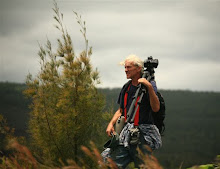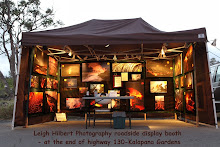 Click on these photos for a larger view size
Click on these photos for a larger view sizeHawaii Volcano Observatory (HVO) is sponsored by the United States Geological Survey (USGS). This combination has for many decades produced a large array of data collection methods, geological & seismic studies, warning systems, public access areas, and historical records of Hawaii Island’s volcanic activity. Mauna Loa and Kilauea Volcano’s are likely the most monitored, studied and accessible of all the worlds active volcanoes.
 In the larger view size you can easily see the fumes from the lava tubes leading to the ocean entry, and if you look closer yet you may notice the stress fractures forming all along the new lava bench, especially near the entry point. These cracks are showing all the signs of fatigue and may be where the bench collapses in the hours or days ahead. These new lava benches are extremely dangerous to be walking on or near to.
In the larger view size you can easily see the fumes from the lava tubes leading to the ocean entry, and if you look closer yet you may notice the stress fractures forming all along the new lava bench, especially near the entry point. These cracks are showing all the signs of fatigue and may be where the bench collapses in the hours or days ahead. These new lava benches are extremely dangerous to be walking on or near to.Besides the images I post here today, the USGS/HVO has posted some new images of the Halemaumau crater with some intereseting captions on their Images webpage

 Further information on these lava flow maps can be viewed on the USGS/HVO maps page
Further information on these lava flow maps can be viewed on the USGS/HVO maps page
****Meanwhile, molten lava continues pouring into the ocean and the steam plume can be seen day and night from the Hawaii County lava viewing access road at the far end of highway 130 near Kalapana.
-----------------------------------------------------
Hawaii Volcano Observatory page of links
History of Hawaii Volcano Observatory (HVO)
Another valuable agency involved with our volcanoes is the National Park Service under the US Department of the Interior that among many other things offer this continuous air quality monitor and warning system webpage for the Hawaii Volcanoes National Park area.
~~~~~~~~~~~~~~~~~~~~~~~~~~~~~~~~~~~~~~~~~~~~~~~~~~~~~~~~~
CURRENT MOON
New moon today is extra close to earth










No comments:
Post a Comment